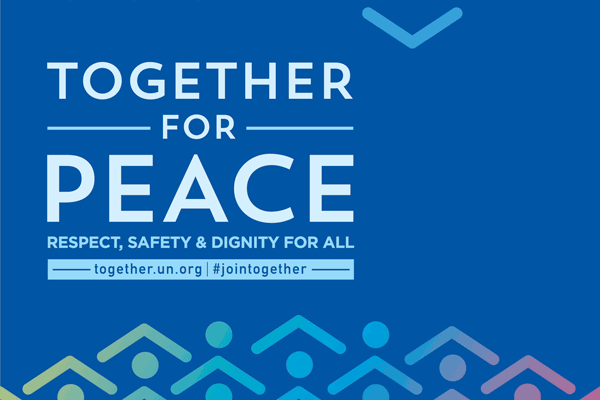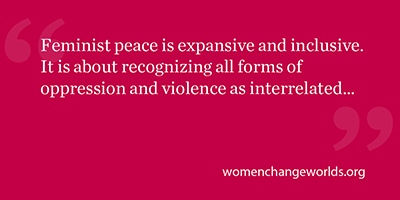When I woke up last month to the news that bell hooks had passed away, my eyes filled with tears for the passing of a person who I only met once in my life, but who has critically influenced so very much of it.
The first bell hooks book that I read was for an undergraduate sociology class. The book was Where We Stand: Class Matters, and as I read her analysis of how class inequality and classism permeate our social experiences, I knew that I had found my new favorite author. Being a low-income white young mom, I had noticed class a lot in my own life, and bell hooks offered me the words and understanding that I needed to be able to articulate these experiences.
Throughout grad school, bell hooks remained among my favorite authors. I "ate up" “Eating the Other,” poured through Feminist Theory: From Margin to Center, and resonated as I read Black Looks: Race & Representation. I read Teaching to Transgress: Education as the Practice of Freedom as I was learning to teach as a graduate teaching assistant, and as a workshop leader in my community. Happy to be Nappy was among my kids' favorite bedtime stories. bell hooks helped me teach my working-class friends and family that Feminism is for Everybody, by acknowledging that class-privileged white feminism certainly hasn't been. There was even a participant in my dissertation whose pseudonym was chosen as a tribute to bell hooks.
Through bell hooks as my guide and gatekeeper, I dove head on into the works of other intersectional feminist queer authors exploring the complexities of intersectional oppression, truth seeking, and empowerment towards equity and justice. I filled my head with the writing of Audre Lorde, Gloria Anzaldúa, Simone de Beauvoir, Patricia Hill Collins, and Dorothy Roberts. I considered my early millennial intersectional feminist approach, through which I saw the classism and class oppression I experienced as a poor white young mama as better aligned with Black feminist critiques of liberal white feminism, and better resonated with the intersectional perspective that I was developing to understand my own identity and life experiences.
bell hooks’ words challenged me to become an even better teacher: to work with my students devotedly, to advocate for them, to guide them . . .
After finishing my doctorate and starting my first job, in which I was teaching classes for single mamas in college, bell hooks was again there to guide me. In Teaching Community: A Pedagogy of Hope, she told me the stories of her own early years as a professor in which she taught similar groups of young moms. She talked me through the dilemmas of justice-seeking pedagogy when teaching students for whom the world—including the institution of college itself—is complexly and intersectionally unjust. bell hooks’ words challenged me to become an even better teacher: to work with my students devotedly, to advocate for them, to guide them, to help them put forth their very best work, and then to "make peace with the outcome."
She also reassured me that it is often very hard to be able to make peace with the outcome. She challenged me to remember that educational accommodation is not educational justice if it means giving students credit for something that they haven't actually learned. How could I as a justice-seeking educator ensure equitable learning outcomes for my students, while reimagining my pedagogy to better accommodate them as learners? What I learned from bell hooks about teaching low-income college student moms is what challenged me to redesign teaching and learning by tapping into two-generational pedagogy.
Like I said, I only met bell hooks once. She came to speak at Boston College, where I got my Ph.D., and gave a guest seminar for our department. I'm not a person who's easily star struck, but it felt like there were so many things I wanted to ask and say to her, that it was too hard to figure out where to begin. I didn't want to bombard her either, so I tried to bite my tongue, opening my ears and listening instead. I remember listening to her as if wisdom was pouring from her like a fountain, and I was mentally scrambling to catalog and store it. She made me feel safe and reassured and appreciated for being me and for adding my voice and perspective to the conversation, and she was kind.
Through her writing, and influence on me across two decades, I consider bell hooks to be among my formative feminist foremothers. I mourn her passing in love, appreciation, respect, and gratitude to a great teacher who changed the lives and perspectives of so many other people, many of whom never got the privilege of meeting her even once. The only reassurance in the face of such a monumental loss to the world is that her words are still out in it, and will continue to be soaked up by many future generations to come.
Autumn Green , Ph.D., is a research scientist at the Wellesley Centers for Women studying higher education access for parenting students. Dr. Green is nationally recognized for her scholarship on the lives of parenting students and has worked to create two-generation programs on college and university campuses.
, Ph.D., is a research scientist at the Wellesley Centers for Women studying higher education access for parenting students. Dr. Green is nationally recognized for her scholarship on the lives of parenting students and has worked to create two-generation programs on college and university campuses.


 Since 1981, the United Nations has observed International Day of Peace on September 21. In its resolution, the UN marked the day as a “
Since 1981, the United Nations has observed International Day of Peace on September 21. In its resolution, the UN marked the day as a “ WILPF has been one of many women’s peace organizations who successfully lobbied the UN Security Council to recognize, in Resolution 1325 (
WILPF has been one of many women’s peace organizations who successfully lobbied the UN Security Council to recognize, in Resolution 1325 (